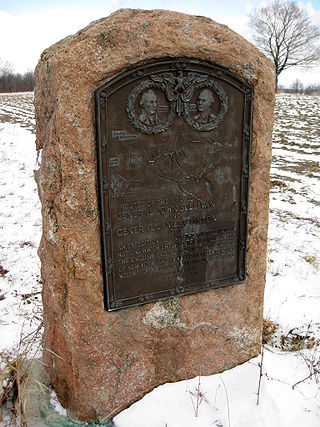
The 1779 Sullivan Expedition was a United States military campaign during the American Revolutionary War, lasting from June to October 1779, against the four British allied nations of the Iroquois. The campaign was ordered by George Washington in response to the 1778 Iroquois and British attacks on Wyoming, German Flatts, and Cherry Valley. The campaign had the aim of "taking the war home to the enemy to break their morale". The Continental Army carried out a scorched-earth campaign in the territory of the Iroquois Confederacy in what is now western and central New York.

The Phelps and Gorham Purchase was the sale, in 1788, of a portion of a large tract of land in western New York State owned by the Seneca nation of the Iroquois Confederacy to a syndicate of land developers led by Oliver Phelps and Nathaniel Gorham. The larger tract of land is generally known as the "Genesee tract" and roughly encompasses all that portion of New York State west of Seneca Lake, consisting of about 6,000,000 acres (24,000 km2).
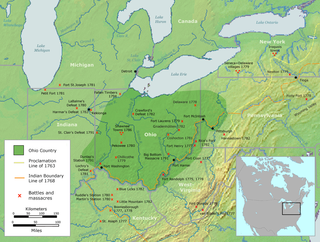
The Ohio Country, was a name used before 1787 for a region of North America west of the Appalachian Mountains north of the upper Ohio and Allegheny rivers, and extending to Lake Erie. The area encompassed present-day northwestern West Virginia, Western Pennsylvania, most of Ohio, and a wedge of southeastern Indiana.

The Cayuga are one of the five original constituents of the Haudenosaunee (Iroquois), a confederacy of Native Americans in New York. The Cayuga homeland lies in the Finger Lakes region along Cayuga Lake, between their league neighbors, the Onondaga to the east and the Seneca to the west. Today, Cayuga people belong to the Six Nations of the Grand River First Nation in Ontario, and the federally recognized Cayuga Nation of New York and the Seneca-Cayuga Tribe of Oklahoma.
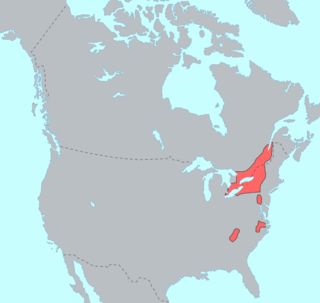
The Iroquoian languages are a language family of indigenous peoples of North America. They are known for their general lack of labial consonants. The Iroquoian languages are polysynthetic and head-marking.

The Catawba, also known as Issa, Essa or Iswä but most commonly Iswa, are a federally recognized tribe of Native Americans, known as the Catawba Indian Nation. Their current lands are in South Carolina, on the Catawba River, near the city of Rock Hill. Their territory once extended into North Carolina, as well, and they still have legal claim to some parcels of land in that state. They were once considered one of the most powerful Southeastern tribes in the Carolina Piedmont, as well as one of the most powerful tribes in the South as a whole, with other, smaller tribes merging into the Catawba as their post-contact numbers dwindled due to the effects of colonization on the region.
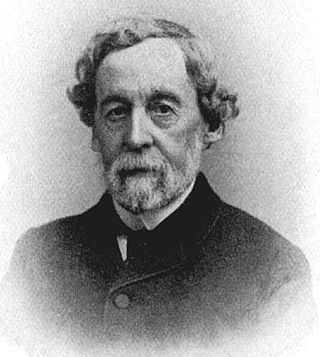
Horatio Emmons Hale was an American-Canadian ethnologist, philologist and businessman. He is known for his study of languages as a key for classifying ancient peoples and being able to trace their migrations.
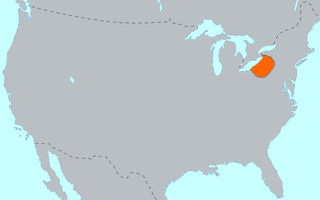
The Erie people were Indigenous people historically living on the south shore of Lake Erie. An Iroquoian group, they lived in what is now western New York, northwestern Pennsylvania, and northern Ohio before 1658. Their nation was decimated in the mid-17th century by five years of prolonged warfare with the powerful neighboring Iroquois for helping the Huron in the Beaver Wars for control of the fur trade.
The Monacan Indian Nation is one of eleven Native American tribes recognized since the late 20th century by the U.S. Commonwealth of Virginia. In January 2018, the United States Congress passed an act to provide federal recognition as tribes to the Monacan and five other tribes in Virginia. They had earlier been so disrupted by land loss, warfare, intermarriage, and discrimination that the main society believed they no longer were "Indians". However, the Monacans reorganized and asserted their culture.

The Saponi are a Native American tribe historically based in the Piedmont of North Carolina and Virginia. They spoke a Siouan language, related to the languages of the Tutelo, Biloxi, and Ofo.

The Manahoac, also recorded as Mahock, were a small group of Siouan-language Native Americans in northern Virginia at the time of European contact. They numbered approximately 1,000 and lived primarily along the Rappahannock River west of modern Fredericksburg and the Fall Line, and east of the Blue Ridge Mountains. They united with the Monacan, the Occaneechi, the Saponi and the Tutelo. They disappeared from the historical record after 1728.

The Tutelo were Native American people living above the Fall Line in present-day Virginia and West Virginia. They spoke a Siouan dialect of the Tutelo language thought to be similar to that of their neighbors, the Monacan and Manahoac nations.

The Cheraw people, also known as the Saraw or Saura, were a Siouan-speaking tribe of Indigenous people of the Southeastern Woodlands, in the Piedmont area of North Carolina near the Sauratown Mountains, east of Pilot Mountain and north of the Yadkin River. They lived in villages near the Catawba River. Their first European and African contact was with the Hernando De Soto Expedition in 1540. The early explorer John Lawson included them in the larger eastern-Siouan confederacy, which he called "the Esaw Nation."
The Occaneechi are Native Americans who lived in the 17th century primarily on the large, 4-mile (6.4 km) long Occoneechee Island and east of the confluence of the Dan and Roanoke rivers, near current-day Clarksville, Virginia. They spoke one of the Siouan languages, and thus related to the Saponi, Tutelo, Eno and other Southeastern Siouan-language peoples living in the Piedmont region of present-day North Carolina and Virginia.

Fort Christanna was one of the projects of Lt. Governor Alexander Spotswood, who was governor of the Virginia Colony 1710–1722. When Fort Christanna opened in 1714, Capt. Robert Hicks was named captain of the fort and relocated his family to the area. His homestead Hicks' Ford is located near the municipality of Emporia in Greensville County, VA. The fort was designed to offer protection and schooling to the tributary Siouan and Iroquoian tribes living to the southwest of the colonized area of Virginia. Located in what became Brunswick County, Virginia, near Gholsonville, the fort was completed in 1714 and enjoyed three successful years of operation as the westernmost outpost of the British Empire at the time, before being finally closed by the House of Burgesses in 1718. However, the Saponi and Tutelo continued to live on the allotted land, 6 miles square, into the 1730s and 1740s.
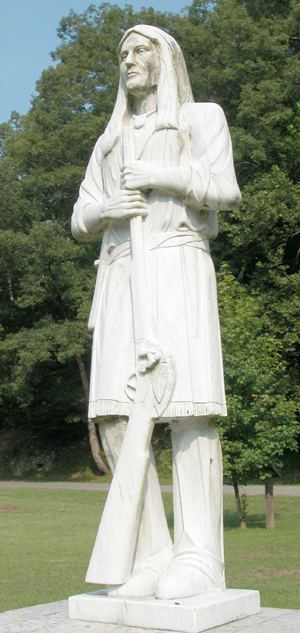
The Mingo people are an Iroquoian group of Native Americans, primarily Seneca and Cayuga, who migrated west from New York to the Ohio Country in the mid-18th century, and their descendants. Some Susquehannock survivors also joined them, and assimilated. Anglo-Americans called these migrants mingos, a corruption of mingwe, an Eastern Algonquian name for Iroquoian-language groups in general. The Mingo have also been called "Ohio Iroquois" and "Ohio Seneca".

Tutelo, also known as Tutelo–Saponi, is a member of the Virginian branch of Siouan languages that were originally spoken in what is now Virginia and West Virginia in the United States.

The protohistoric period of the state of West Virginia in the United States began in the mid-sixteenth century with the arrival of European trade goods. Explorers and colonists brought these goods to the eastern and southern coasts of North America and were brought inland by native trade routes. This was a period characterized by increased intertribal strife, rapid population decline, the abandonment of traditional life styles, and the extinction and migrations of many Native American groups.
Coreorgonel was an 18th-century Native American village in what is now Tompkins County, New York. The name has been translated as "Where we keep the pipe of peace."